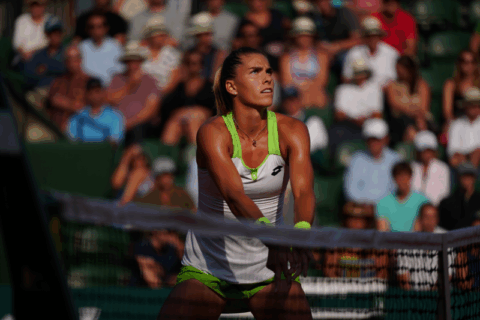
Predict Match Outcomes Accurately Using Cutting-Edge Data Models
Unlock the Power of Advanced Statistical Models for Sports Prediction
In the digital age, predicting match outcomes with precision has become both an art and a science. Whether you’re a passionate sports bettor, a team strategist, or an avid fan eager to understand the game deeper, leveraging advanced statistical models elevates your insights—transforming guesswork into informed decisions.
This comprehensive guide explores how sophisticated data analytics, machine learning, and predictive modeling techniques enable you to predict match results with remarkable accuracy. Dive in to discover the strategic edge these models provide and learn how to apply them effectively to refine your betting strategies.
Why Traditional Methods Fall Short
Conventional predictions often rely on basic stats like recent form, head-to-head records, or expert opinions. While valuable, these methods lack the depth needed for high-precision predictions. They fail to account for complex interactions within player performance, tactical changes, environmental factors, and evolving team dynamics.
Key limitations include:
- Overgeneralization of past results
- Ignorance of subtle performance indicators
- Limited adaptability to real-time developments
To overcome these hurdles, advanced statistical models incorporate a multitude of data points, uncovering insights that remain hidden in traditional analyses.
The Power of Advanced Data Models in Sports Predictions
What Are Advanced Statistical Models?
Advanced statistical models are algorithms designed to analyze large datasets to identify patterns, trends, and correlations. They enable:
- Dynamic predictions that adapt as new data emerges
- Uncovering hidden factors influencing match outcomes
- Quantifying uncertainties to assess prediction confidence
Popular techniques include:
- Machine Learning algorithms (Random Forests, Gradient Boosting Machines)
- Probabilistic models (Bayesian methods)
- Deep learning neural networks
How Do These Models Improve Match Outcome Predictions?
| Feature | Benefits | Impact on Predictions |
| Data Integration | Combine diverse data types: player stats, weather, pitch conditions | More comprehensive understanding |
| Pattern Recognition | Detect complex interactions | Improved accuracy in winning probability estimation |
| Continuous Learning | Update models with real-time data | Adaptability to recent form and tactical shifts |
| Uncertainty Quantification | Measure confidence levels | Better risk management in betting |
Key Metrics to Evaluate Model Performance
- Accuracy: Percentage of correct predictions
- Precision and Recall: For predicting specific outcomes (win/loss/draw)
- Log Loss / Brier Score: Handling probabilistic predictions
- ROC-AUC: Evaluating model’s discriminative performance
How to Implement Advanced Models for Match Predictions
Step 1: Data Collection
Gather comprehensive data, including:
- Historical match results
- Player performance metrics
- Tactical data and formations
- Environmental variables (weather, pitch condition)
- Betting odds and market data
Step 2: Data Preparation
Clean and preprocess data:
- Remove inconsistencies
- Normalize values
- Feature engineering to create meaningful indicators
Step 3: Model Selection and Training
Choose suitable models based on data size and complexity:
- Random Forests for structured data
- Neural Networks for unstructured data like images or sequences
- Bayesian models for probabilistic insights
Train models using historical data, and validate their performance with cross-validation or out-of-sample testing.
Step 4: Deployment and Continuous Improvement
Deploy models in real-time prediction systems:
- Update models with ongoing match data
- Monitor performance
- Refine features and algorithms over time
Applying Insights to Enhance Betting Strategies
Advanced statistical models aren’t just predictive tools—they provide strategic insights:
- Identifying value bets where the model’s probability surpasses market odds
- Managing risk through probability thresholds
- Spotting trends and team momentum shifts early
- Fine-tuning bet sizing based on confidence levels
Use these insights to develop systematic betting strategies grounded in data-driven certainty rather than intuition.
Frequently Asked Questions
Can advanced statistical models guarantee wins?
While they significantly improve predictive accuracy, no model guarantees 100% success due to the inherent unpredictability of sports. However, they maximize your edge by revealing key insights that often go unnoticed.
What types of data are most valuable?
High-quality, granular data such as live player metrics, tactical formations, weather, and even psychological factors offer richer insights for models.
Are these models accessible for amateur bettors?
Yes. With the advent of user-friendly platforms and open-source tools, even amateur enthusiasts can leverage advanced models after some learning.
Explore More and Enhance Your Predictions Today
Harnessing the latest in data science and machine learning transforms how you predict sports outcomes. By applying cutting-edge data models, you’ll gain a deeper understanding of the game, identify lucrative betting opportunities, and refine your strategies with scientific precision.
Ready to elevate your sports betting game? Explore our in-depth resources, tutorials, and real-world case studies now to unlock the predictive power of advanced statistical modeling—more accuracy, more insight, more wins.


